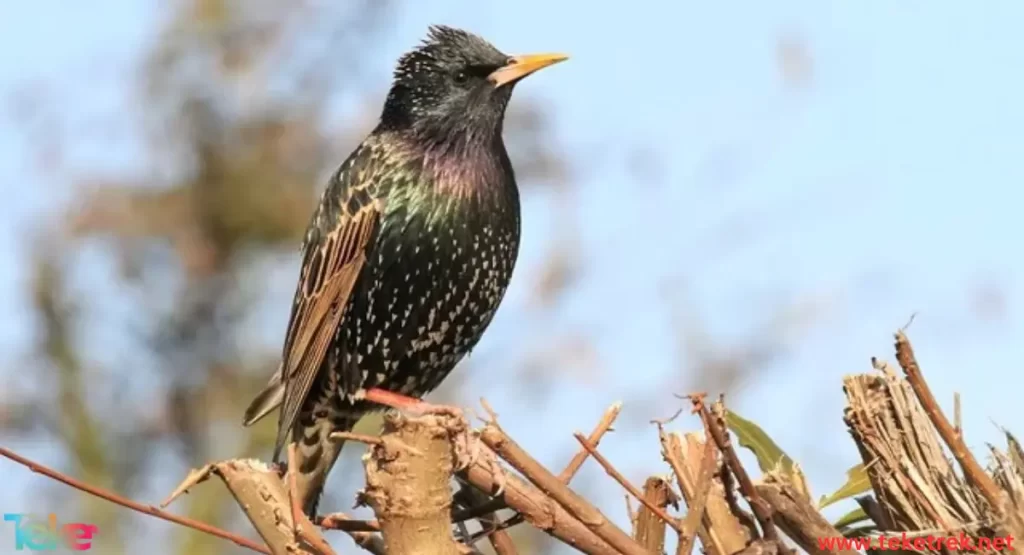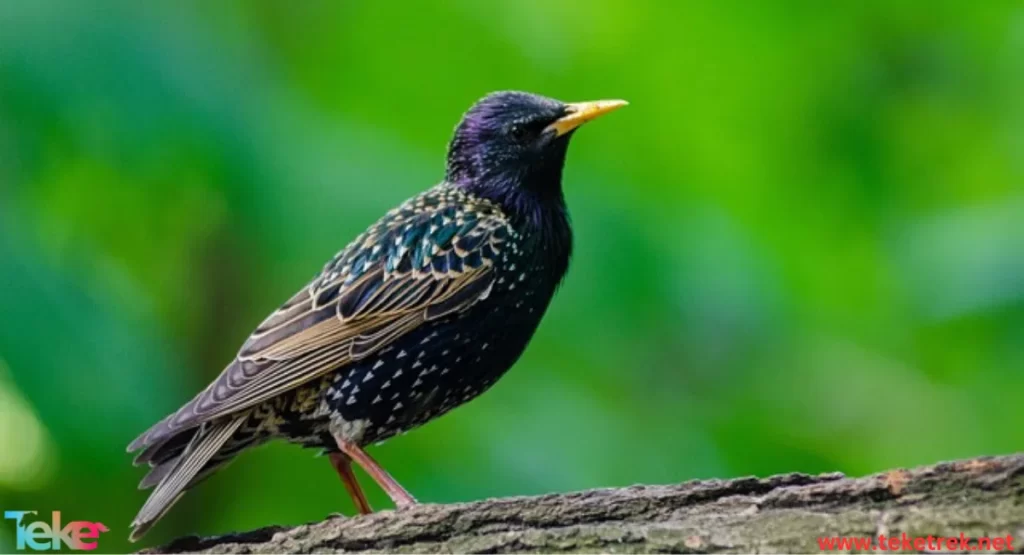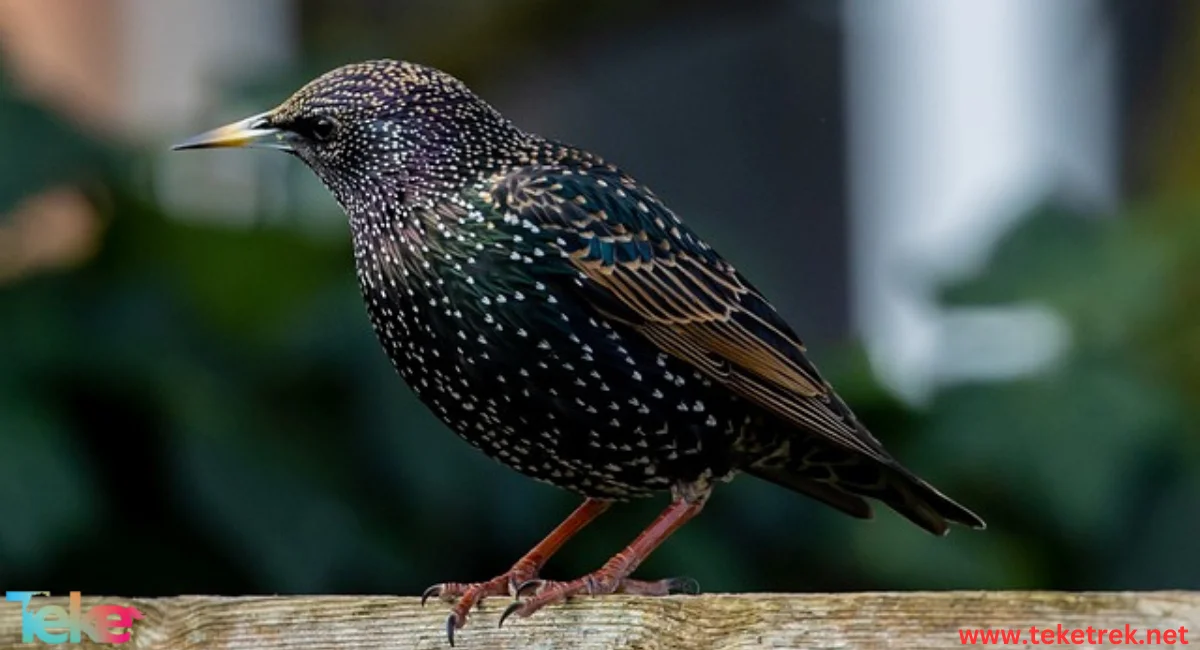The starling is the creative bird that creates artistic paintings in the sky. The creative bird in making geometric shapes and creating artistic paintings. Through its enormous flocks flying together in the sky. It is one of the most surprising species in the world, in addition to being extremely beautiful and one of the smartest birds. It has distinct shapes and bright colors. Let’s get to know the secrets of this beautiful, unique creature together. Which many of us want to raise in our home.
In this article in TekeTrek Website, we will introduce you to the most important information related to this object. Follow along with us.
Specifications of the starling bird
Scientific name of starling bird is Sturnus, It has the following characteristics:
- Length and size:
The starling bird belongs to the starling family. It is from the order of passerines.
It is a beautiful bird, medium size, weighing 75 grams. While its length is 23 cm.
- Legs and beak:
It has pink legs and a beak that is black in winter and yellow in summer. It is thin, sharp, and long, with its end curved downward. In addition, its feet are four-toed. It is also long and strong.
- Claws:
Starlings have large, arched claws. In addition, starlings have a short neck and a strong body.
- Wings and tail:
This beautiful bird has a long wing and a short tail that ends in feathers. In addition, starlings are distinguished by their dexterity and agility in flight. This is done by making noise by flapping the wings. In addition, starlings’ feathers are often brightly colored.
Starlings are a social bird, with most species living in flocks year-round.
- Starlings can imitate the sounds of other birds. A starling can produce 15-20 distinct imitations. In addition, it can imitate car alarms and mechanical sounds.
- Starlings build nests inside holes, to be protected from predators.
- Starlings can fly at an average speed of 77.2 kilometers per hour.
Where does the starling bird live?
- Its original homeland was the continents of the ancient world, Asia and Africa. But it was transported to North America and Australia in the late nineteenth century.
- The starling bird lives in a wide area from the Arctic Circle to the equator.
- Scientists say that the only place where it is not found is dry sandy deserts.
- In addition, it lives in evergreen forests. As well as open forests and savannas. In addition, there are some species near places inhabited by humans. An example of this is urban areas and agricultural lands.
Starling migration
- Starlings are known to migrate in flocks that create miracles in the sky. It begins to migrate when winter arrives in the northern hemisphere. This is due to the decrease in food and water he takes.
- Starlings migrate to the southern hemisphere. In search of a better climate.
What does the starling feed on?
- Starlings eat fruits, insects, caterpillars, spiders and earthworms. In addition, it feeds on seeds and tree branches. For example, white sandalwood and Indian banyan.
- It can feed on ripe fruits, as well as the nectar of flowers, except that it loves to eat giant mice.
- This bird is a ferocious hunter. Where he needs to eat in order to survive.


Reproduction in starlings
- Usually, female starlings lay 4-6 eggs in mid-April. All birds begin laying eggs within a colony within a few days.
- Starling eggs are known to be soft. While its color is bright light blue.
- The female starling takes care of the eggs. The chicks emerge after 12 days. In addition, eggs may not hatch due to malnutrition.
- In addition, female starlings are characterized by high fertility. Where parents take on the task of caring for the young after birth. Hence the task of cleaning the nest.
Amazing facts about starlings
- Despite their small size, starlings can be very aggressive and noisy. They compete with other birds for suitable places to build nests.
- There are more than 30 species of starlings in the world.
- Some people around the world eat starling meat. It is said to be rich in proteins and vitamins.
- These birds can play a useful role in pest control. But starlings destroy crops and are a pest to farmers. They attack gardens, trees and fields to find food. Thus, causing significant and irreparable damage.
- Starlings live from 2 to 12 years or more. This varies from one type to another.
- Sometimes starlings are infected with some infectious diseases. Such as bacteria, fungi, and salmonella. These diseases can be transmitted to humans or other animals.
- It is said that determining the sex of this type of bird is based on the color of the iris. Males have brown eyes and long feathers. While females have gray eyes and short feathers.
Types of starling birds
- White starling bird:
One of the most beautiful birds ever. In addition to being a rare type of starling, it is found only on the island of Bali in Indonesia. It is known to be medium in size, about 25 cm long. In addition, it lives in burrows dug in tree trunks while spending all its time in trees. This is unlike other types of starlings, and therefore it only comes down to the ground to drink.
- Black starling:
Its presence is limited to the Iberian Peninsula and northwest Africa. In addition to its presence in southern France and the islands of Sicily, Corsica and Sardinia. It feeds mainly on insects, small frogs, lizards and rodents.
- Spotted starling:
Its origins go back to India, where it is black, white, and reddish-brown in color.
- European starling:
It is an iridescent black bird. It has a long, sharp beak and is about 20 cm long.
- Talking starling bird:
These birds can repeat words after their owners. But they don’t talk quite like parrots.
- Colorful starling bird:
This species is one of the most popular birds due to its amazing combination of colors. Because she looks so attractive, beautiful and exceptional.
- Green starling bird:
It is named after its color. It is one of the male birds. Which is lively and active.
- Pink starling:
Its habitat is plains, steppes and mountain rocks, It is widely spread in the summer.
- Common starling:
It is 21 cm long. It lives in various urban and rural areas, buildings and tree holes.
- Myna starling:
One of humans’ favorite birds. They tend to live in residential and rural areas. In addition, its head and neck are black. Its feathers and wings are close to brown.
- Kenrick starling:
The shortest species of starling. Its length is 15 cm. The lightest type. It reaches 34 grams.
- Starling Gracula:
It is the largest species of starling, measuring up to 36 cm, and weighing 400 grams.


FAQ
- How fast is a starling?
During migration, the common starling can fly at a speed of 60-80 km/h, covering a distance of up to 1000-1500 km.
- Are starlings intelligent?
Yes, the starling is one of the most intelligent birds in the world.
- What is the behavior of a starling?
Starlings live in noisy, social flocks and are excellent mimics, making a wide range of chirps, chirps, clicks and insect sounds.
In the end, the amazing starling remains. The most eye-catching species of birds. Which moves gracefully from one place to another. In addition, his voice will remain a song preserved in our memories. It also constitutes a tweet and a tune that never leaves our ears






